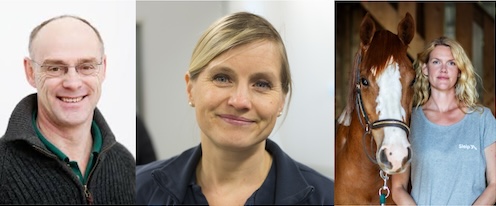Tidningen Ridsport article by Susanne Högdahl about Hästen i Skåne's Brösarp Project on the durability of young horses who roam freely large hilly fields, led by Professor Ingvar Fredricson, DVM, PhD. The article includes inks to the full report and the Swedish Television feature( English translation).
Check the clip: "Not optimal for young horses to walk on a football field"
Check the clip: "Not Optimal for Young Horses to Walk on Football Field
The Brösarps Project: The evaluation of the Brösarps project is complete and now SVT has made a feature. See what veterinary professor Ingvar Fredricson and national team rider Jens Fredricson say about the results. "It could be a market advantage for us as horse breeders in Sweden," says Jens, among other things, in the TV clip that you can see here.
The aim when the Brösarps project started in the spring of 2019 was to see how young horses are affected by growing up on large and hilly fields. Both behavior and mood were recorded. Another two seasons later, the evaluation is complete. SVT News in Skåne has visited Brösarp.
- We can state that the horses that participated look good. They have walked on different surfaces and it strengthens the hooves, bones, tendons and ligaments, says Jens Fredricson, national team rider and stable master at Flyinge and Strömsholm, to SVT News.
More musculor
The young horses that have grazed on the slopes of Österlen run more, eat more and get a good feel for moving in hilly terrain. They are also injury-free even though they have galloped among logs and stones.
They have also grown more slowly and become more muscular than horses in a reference group at Bollerup's natural farming high school.
– The horses at Bollerup moved less and they got quite fat, says Pia Petersson, operations manager of Häst i Skåne.
The horses in the project moved an average of 12 kilometers per day compared to the Bollerup horses' eight kilometers per day. Those who were in boxes and paddocks moved only four kilometers per day.
– They should get a good balance early on, much like kids who climb trees and play become completely different from those who sit and play computer games, says the veterinary professor Ingvar Fredricson who is one of the initiators behind the project.
Whether the horses will become future golden horses is difficult to say, but Jens Fredricson would like more horses to have the opportunity to grow up in wilder nature than a horse paddock.
– It is not optimal for a young horse to walk on a football field, he says.
See the filmed interview from Brösarp here
Read the entire report here.






